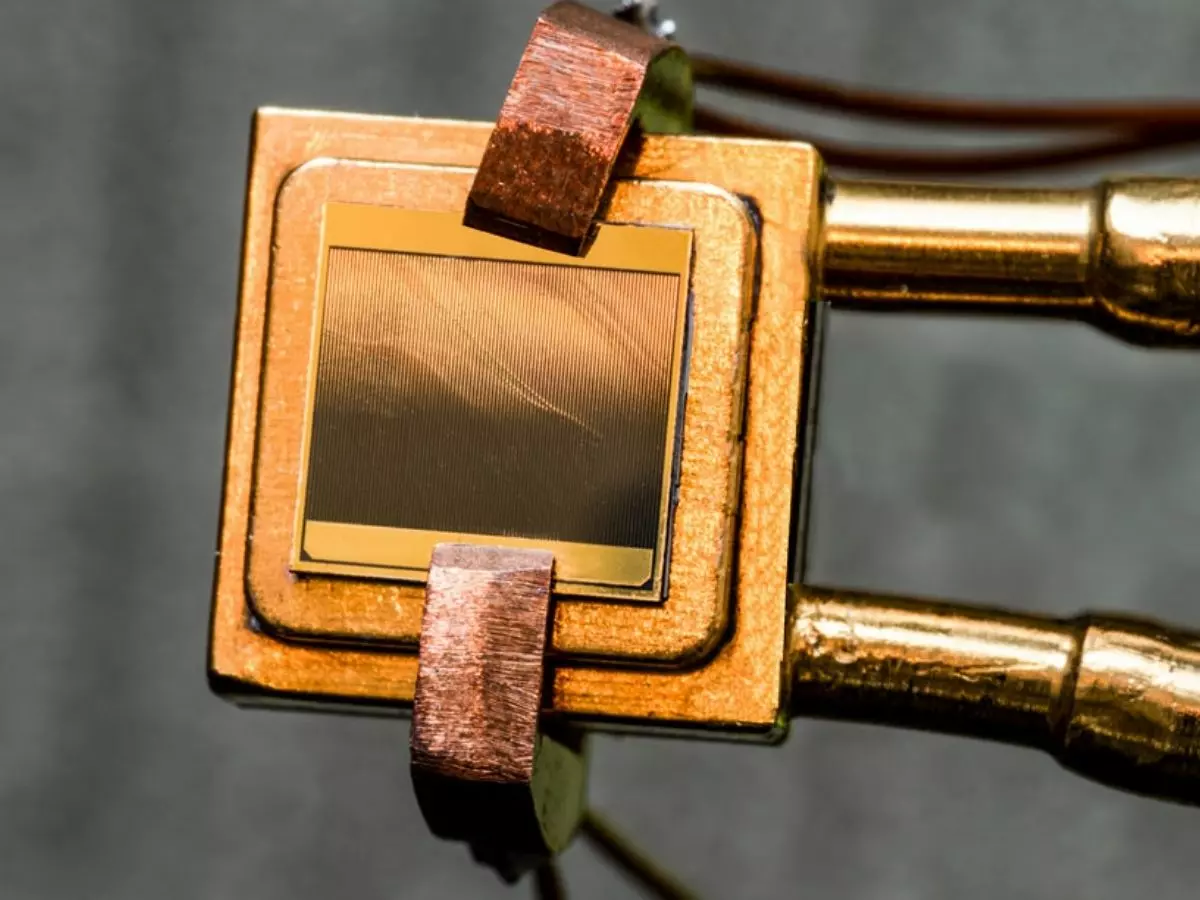Thermal Batteries Could Be Key In Efficiently Storing Wind And Solar Power On Grid
Collaborating with researchers at the National Renewable Energy Laboratory, the team laid down over two dozen thin layers of different semiconductors to create two separate cells stacked atop one another. The top cell absorbed the most visible UV photons whereas the lower cells absorbed most IR.

Researchers from MIT and the National Renewable Energy Laboratory have seen a 30 percent jump in the efficiency of a thermophotovoltaic -- a semiconductor structure that turns photons emitted from a heat source into electricity in the same manner as a solar cell turns sunlight into power.
 Felice Frankel via Science
Felice Frankel via Science
Also Read: Wind And Solar Energy Beat Coal To Generate 38% Of Global Electricity In 2021
Reported first by Science.org, they do this by feeding surplus wind or solar energy to a heating element that increases the temperature of a liquid metal bath or even a graphite block to thousands of degrees. This heat is later turned into electricity by turning into steam that drives a turbine.
The approach isn¡¯t novel, but it has had some tradeoffs -- high temperatures spike the conversion efficiency but this also causes the turbine materials to disintegrate at around 1500 degrees celsius. Here¡¯s where TPVs come in.
Channel the stored heat to a metal filament, setting it to glow similar to tungsten wire in an incandescent light bulb and using TPVs, absorb the emitted light and turn it into electricity.
 unsplash
unsplash
TPVs aren¡¯t new -- they were invented in the 1960s, however at the time they weren¡¯t so efficient. They got 30 percent more efficient in 1980 and it has been stagnant at that level for quite some time now.
This is primarily because tungsten and other metals often radiate photons across a broad spectrum from high energy UV to low energy far IR. However, TPVs are optimised to absorb photons in a narrow range, which basically means lights with higher and lower frequencies go unnoticed.
Researchers, however, tried to circumvent this, Asegun Henry, an MIT engineer experimented with both the emitter and the TPV. TPV setups used to heat up to around 1400 degrees celsius to maximise their brightness in the wavelength range for which TPVs were optimised.
Henry aimed to push the temperature even higher --1000 degrees celsius higher to be precise, causing tungsten to emit more photons at higher energies with an intention to improve the energy conversion, but this meant the TPV too needed to be reworked.
 Unsplash
Unsplash
Also Read: India Added Record-Breaking 10-Gigawatt Solar Energy Capacity In 2021
Collaborating with researchers at the National Renewable Energy Laboratory, the team laid down over two dozen thin layers of different semiconductors to create two separate cells stacked atop one another. The top cell absorbed the most visible UV photons whereas the lower cells absorbed most IR.
A thin gold sheet at the very bottom cell reflected low-energy photons the TPV couldn¡¯t harvest. The tungsten reabsorbed the energy, preventing it from getting lost. All this meant that the TPV was able to convert 41.1 percent of the energy emitted from a 2400 degree celsius tungsten filament to electricity.
Henry has recently launched a venture dubbed Thermal battery Corp to commercialise this tech that he estimates could store electricity for $10 per kilowatt-hour of capacity -- cheaper than one-tenth the cost of grid-scale li-ion batteries.
Keep visiting Indiatimes.com for the latest science and technology news.
